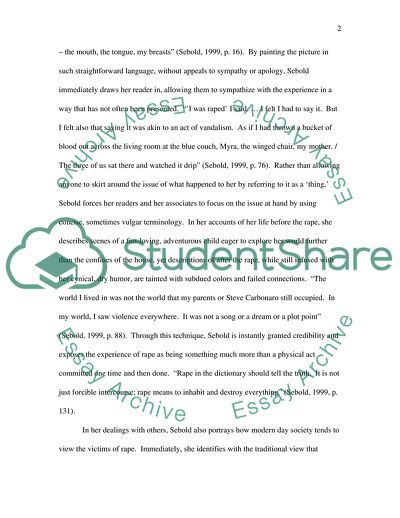Alice Sebolds Lucky Essay Example | Topics and Well Written Essays - 1500 words. https://studentshare.org/literature/1703091-luck-by-alice-sebold
Alice Sebolds Lucky Essay Example | Topics and Well Written Essays - 1500 Words. https://studentshare.org/literature/1703091-luck-by-alice-sebold.


